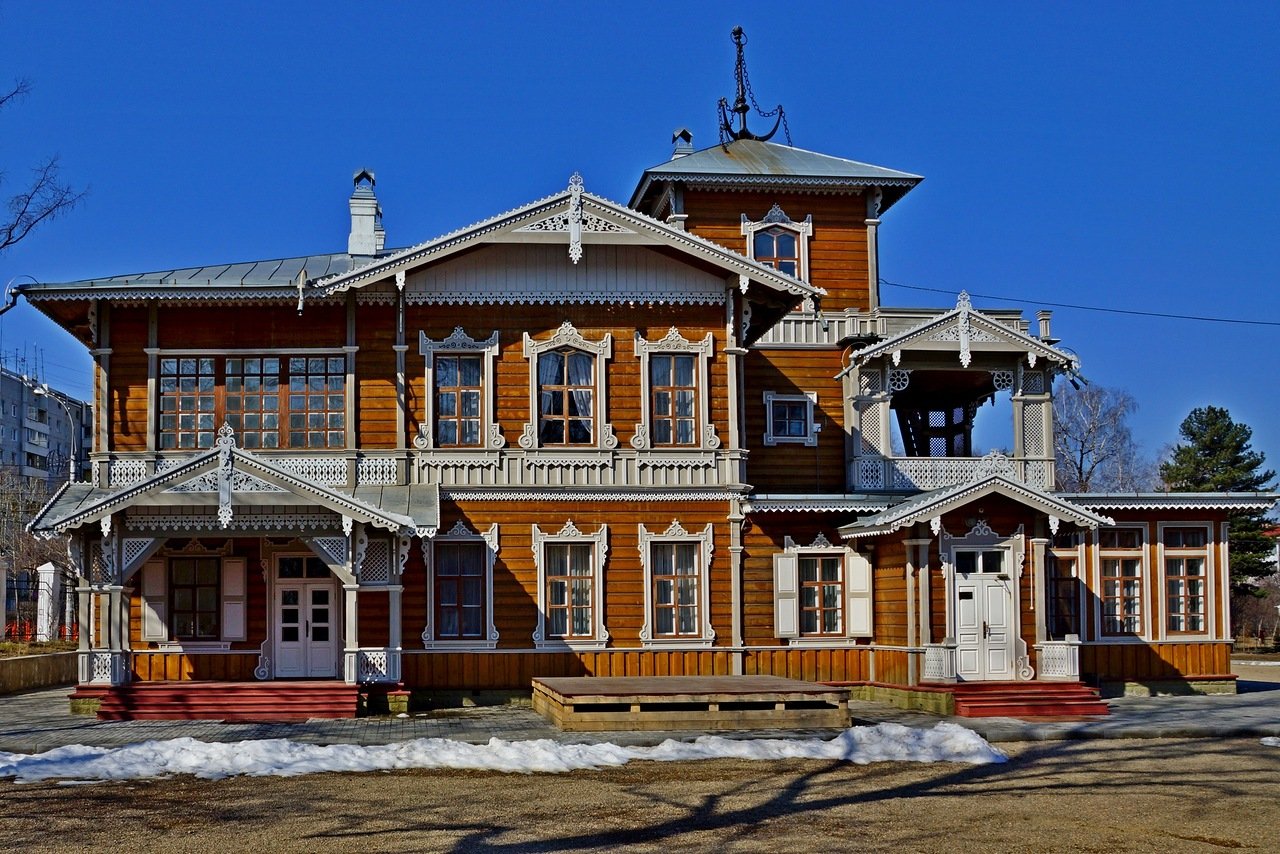#4140. Carved Wooden Terem: Exquisite Façade with Delicate White Decorative Elements
The image showcases a magnificent example of traditional Russian wooden architecture in the style of "wooden Art Nouveau" or "Russian terem" from the late 19th to early 20th century. This two-story building displays the characteristic rich decorative features of Russian architectural tradition.
The façade is clad with horizontal wooden panels in a warm golden-brown hue, creating an expressive contrast with white decorative elements. Particular attention is drawn to the exquisite lace-like decor: carved window frames, ornate cornices, and openwork valances and bargeboards. These elements, executed in white, emphasize the compositional structure of the façade and give the building a festive, ornate appearance.
The architectural composition is asymmetrical and dynamic. The building is adorned with several verandas, porches, and balconies with decorative railings. Especially noteworthy is the small tower with a decorative spire, which adds a vertical dominant to the building's silhouette. The roof has a complex multi-pitched form with characteristic gables decorated with carved elements.
Window openings of various sizes and proportions are unified by a consistent stylistic framing approach. The large veranda windows with small panes contrast with the more traditional windows of the living quarters. Entrance groups are accentuated by small porches with canopies.
This architectural specimen represents a characteristic example of the Russian national-romantic trend in wooden architecture, where traditional forms of folk architecture have been reinterpreted in the spirit of Art Nouveau of the early 20th century.
